Kitasenju, Japan's best-kept secret! A comprehensive guide: What are the unique experiences to be had in this historic town that's been a post town for 400 years?

When you think of tourist destinations in Tokyo, the capital of Japan, what comes to mind? Downtown areas such as Shibuya, Ginza, and Asakusa are certainly popular with foreign visitors as places to experience Japanese subculture and Japanese culture, but there is another place where you can experience Japanese culture and popular culture in a surprising place: Kita-Senju in Adachi Ward.
-
Table of Contents
- What kind of place is Kitasenju?
- Ninjas, samurai, Japanese sweets, etc. ... Experience a wide variety of traditional Japanese culture at "rojicoya"
- "Nomiyoko Tour" - a tour around the drinking alleys
- Conclusion! A charming city where you can enjoy both the present and the past of Japan
What kind of place is Kitasenju?
Kita-Senju, which has commercial facilities and traditional shopping streets, is conveniently located just one train ride away from tourist spots such as Asakusa, Akihabara, and Tokyo Skytree. Because it doesn't feature much in guidebooks, it doesn't get as many tourists as Asakusa or Akihabara, making it the perfect town to get a glimpse into the real life of Japanese people.
When you exit the ticket gate at Kita-Senju Station, there is a west exit and an east exit. The west exit is home to commercial facilities such as "LUMINE" and "Marui", and is crowded with young people. On the other hand, if you head towards the east exit, there are small shops that locals regularly use, and the atmosphere is completely different from the west exit. One of the charms of Kita-Senju is that you can enjoy the difference in atmosphere between the two sides of the train tracks.
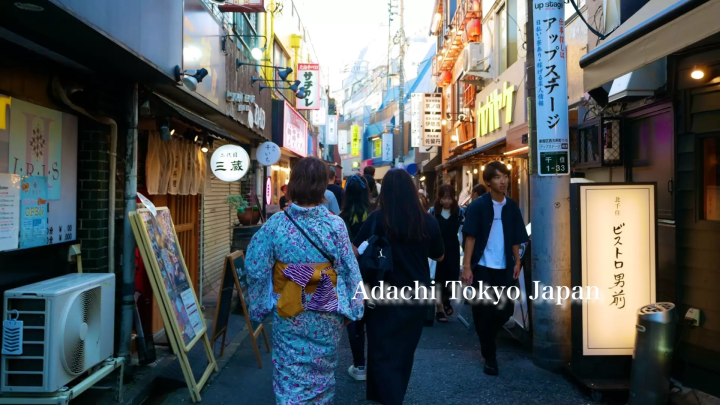
Ninjas, samurai, Japanese sweets, etc. ... Experience a wide variety of traditional Japanese culture at "rojicoya"
Experience Japanese culture in a traditional Japanese house
Kita-Senju has many renovated old houses. They are unique and distinctive, with cafes, workshops, art galleries, and more. This time, we visited a space where you can experience traditional Japanese culture, located a 5-minute walk from the east exit of Kita-Senju Station. Its name is "rojicoya." "Roji" means a narrow road between houses in Japanese, and rojicoya is located at the end of a narrow road off the main street. "Coya" is a word taken from "terakoya," a place where children gathered in the Edo period. It serves as a community space for the local community, where events are held where adults and children can experience Japanese culture.
In addition, the guesthouse is a renovated 90-year-old traditional Japanese house, allowing you to experience traditional Japanese architecture.
An event was held at rojicoya where people could see, touch, and experience traditional Japanese culture. This time, we invited foreigners who love Japan to actually experience it, so we will report in detail.
Japanese sweets and koto experience
First, we started with making Japanese sweets. A Japanese sweets craftsman with 20 years of experience gave a demonstration to teach how to make them. Some people were amazed at the process of making delicate and intricate Japanese sweets, exclaiming, "Beautiful!", while others asked the craftsman questions they didn't understand, such as, "Why do you layer pink and white dough to make them?"
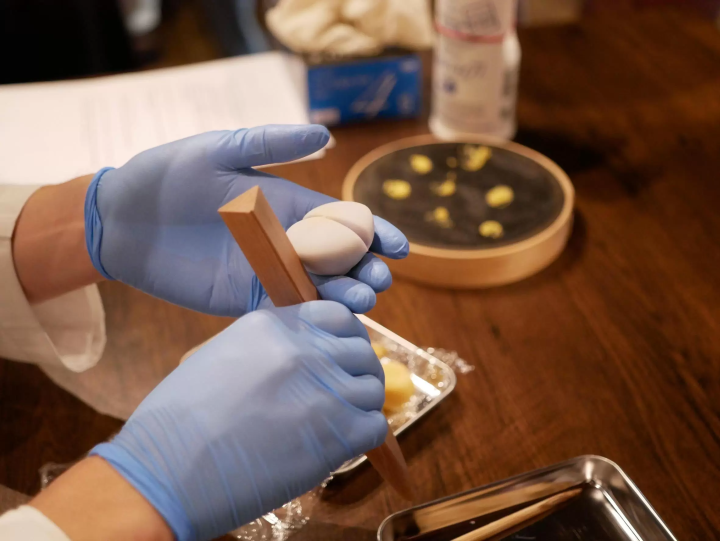
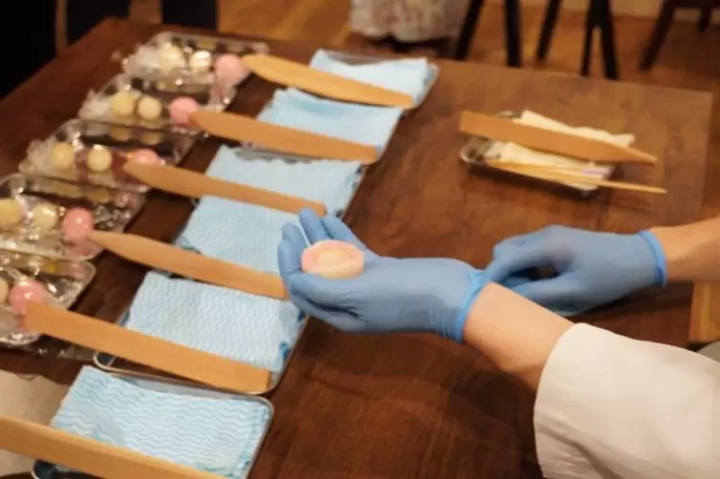
After the demonstration, we made Japanese sweets. It was impressive to see everyone enjoying the experience, wrapping the bean paste inside neatly and making flower petals with their fingertips.
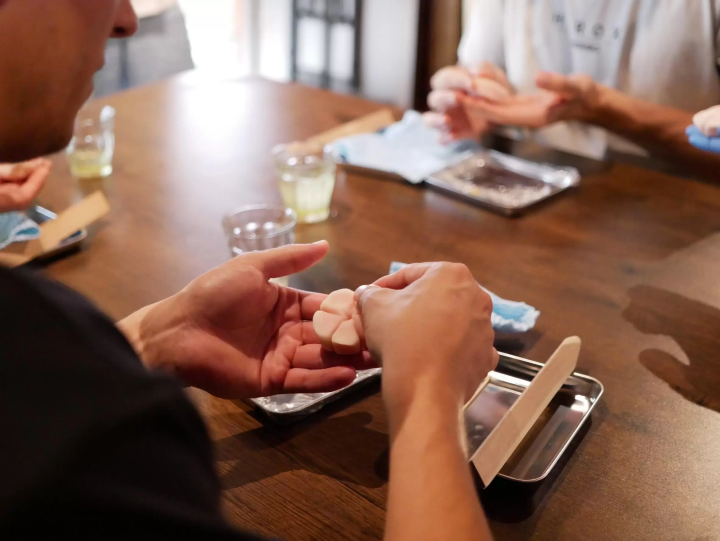
Afterwards, a live performance of the traditional Japanese instrument "koto" started while enjoying the Japanese sweets and green tea that they had made themselves. After the performance, everyone took turns putting on the koto nails, touching the koto and enjoying the delicate sound.
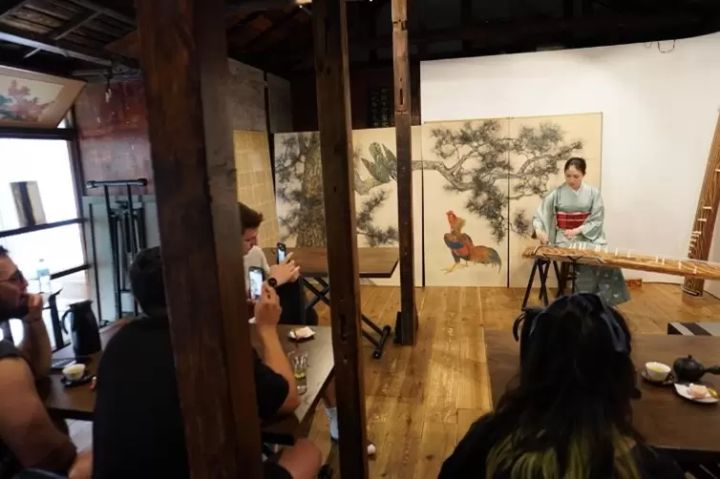
Samurai and Ninja Experience: A luxurious double feature!
Now it's time for the samurai/ninja experience. Throw shuriken like a real ninja and try out a Japanese sword like a real samurai!
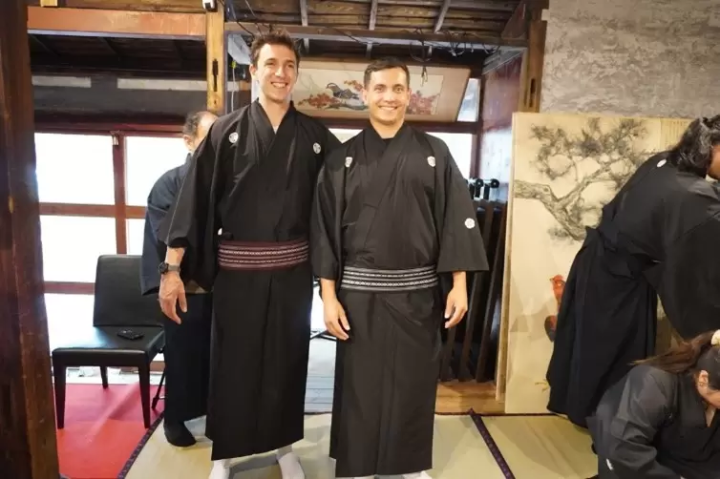
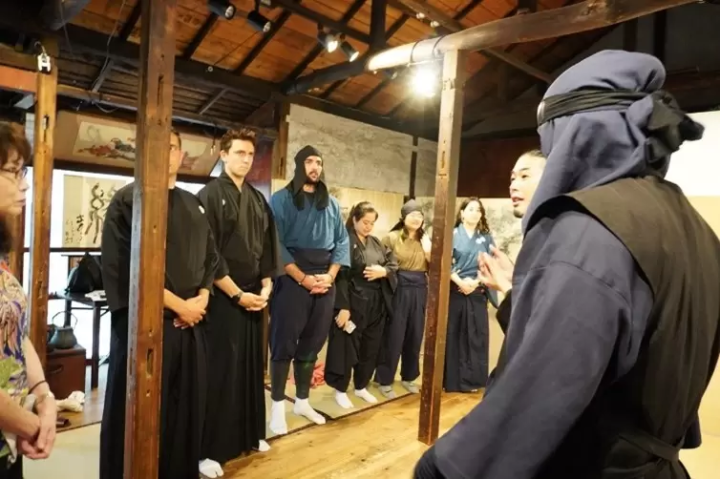
The foreigners dressed in real samurai and ninja costumes look great! You can choose between a samurai costume or a ninja costume, but you can experience being a ninja or a samurai in either costume.
First, a Japanese ninja will demonstrate a technique using shuriken. He will throw the shuriken with great force onto the tatami mat and stab it into the ground, but it will take some time to get the hang of it.
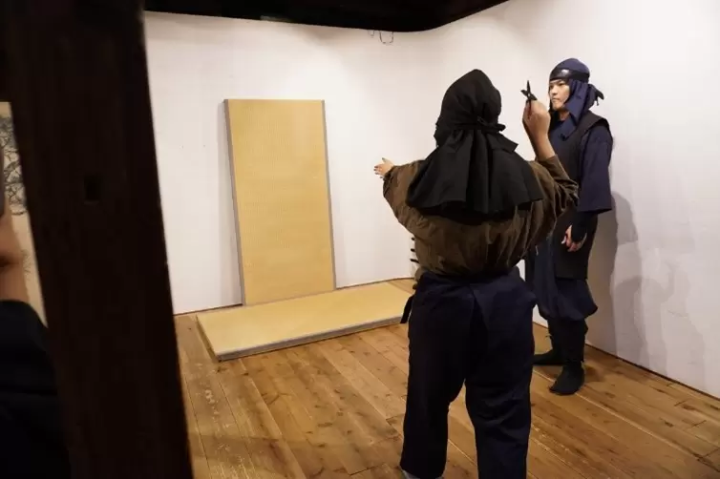
Participants first practice throwing shuriken several times using plastic ones. For the real thing, they switch to real steel shuriken and throw them at the tatami mats. They struggle to get the shuriken to stick as they want, but they get to experience the difficulty and depth of throwing shuriken.
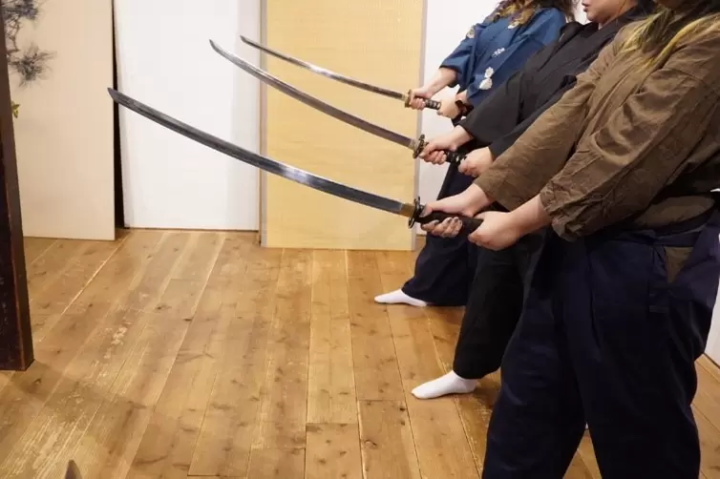
In the samurai experience, we started by practicing with a replica Japanese sword. We learned the proper way to hold a Japanese sword and how to raise our arms. After that, we switched to a real Japanese sword and did a test cut.
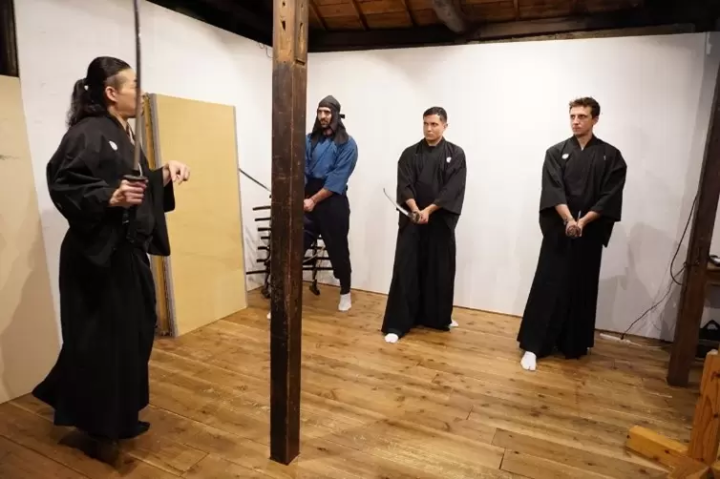
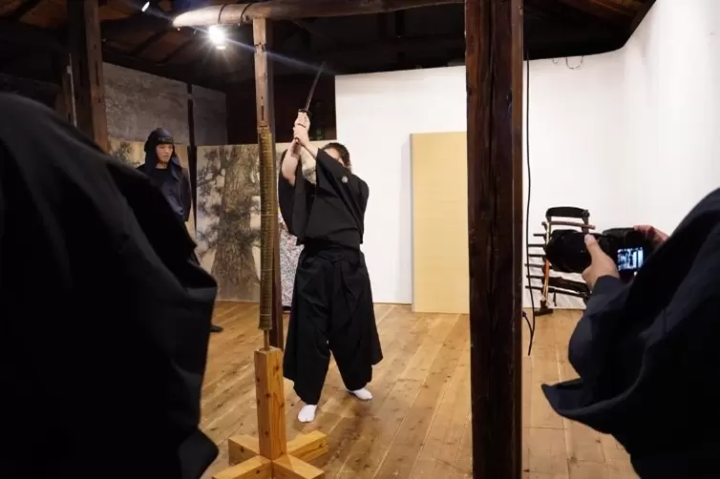
"Teshigiri," which involves cutting a rolled up piece of "goza," the surface of a tatami mat, with great force, may look easy at first glance, but it's actually very difficult. Many of the foreigners who tried it this time were very skilled, and among them, some cut so beautifully that it was hard to believe it was their first time.
It was impressive to see how quiet the entire store was and how all the participants were concentrating when throwing shuriken or trying out the cuts. Also, since Japanese people rarely have the opportunity to touch real shuriken or real swords, it is a rare opportunity for foreigners to experience this part of Japanese culture when they visit Japan.
After the samurai/ninja experience, we walked around the town. A guide who is fluent in English will show us around the town of Kita-Senju. We passed under the elevated railway from the east exit and headed towards the west exit.
"Nomiyoko Tour" - a tour around the drinking alleys
After the samurai/ninja experience, we walked around the town. A guide who is fluent in English will show us around the town of Kita-Senju. We passed under the elevated railway from the east exit and headed towards the west exit.
In addition to the large commercial facilities at the west exit, there is an area called "Nomiya Yokocho" where popular izakayas are lined up that are popular among locals. There are many small privately owned drinking establishments, so it's hard to decide which one to go to. Even for Japanese people, this drinking district is a place where you can experience the deep spots of the downtown area.
At rojicoya, we are hosting a "Nomiyoko Tour" where you can stroll through this alley and actually go into restaurants to experience a Japanese izakaya.
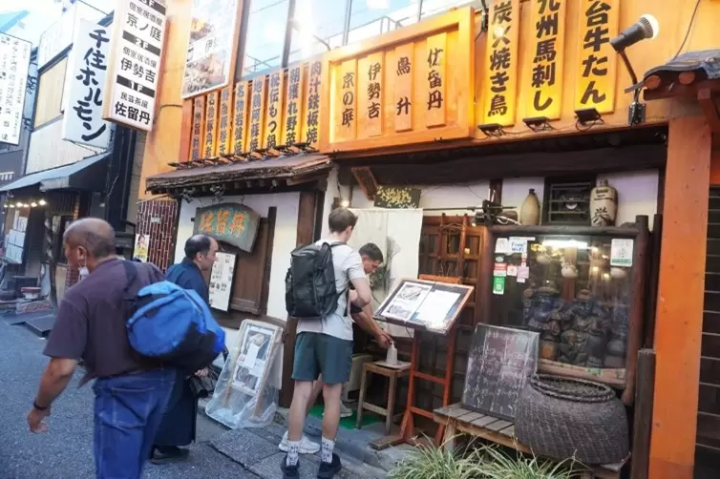
Since it was a Saturday, the atmosphere was quite lively from the evening onwards. Finally, we went to a restaurant that served Japanese izakaya dishes, mainly yakitori, and all the foreign participants seemed to enjoy their drinks and snacks.
Conclusion! A charming city where you can enjoy both the present and the past of Japan
Kitasenju, which we introduced this time, is a very convenient town for shopping, with 14 shopping streets. There are so many things to see that you can't see everything in just one day! Not only can you experience Japanese culture, but you can also see the real lives of Japanese people who live there, so I feel that it is a town that I would definitely recommend to those who want to tour efficiently. You can also buy souvenirs at the local supermarket and enjoy shopping. Please come to Kitasenju, where you can experience traditional Japanese culture and modern Japanese culture.
ANABA ADACHI JAPAN Adachi City Tourism Multilingual Page here
The shop featured in the article is Rojiura Terakoya, a 90-year-old traditional Japanese house where you can experience Japanese culture.
A five-minute walk from Kita-Senju Station, past the bustling shopping district, you'll find yourself in a quiet, 90-year-old traditional Japanese house. Learn the skills and spirit of the samurai, and listen to the sounds of the shamisen. Experience the wisdom of our ancestors and let your heart be filled with harmony.
The contents on this page may partially contain automatic translation.































![[Kanazawa] Enjoy the world of gold leaf to the fullest in the city with the highest production volume in Japan](https://resources.matcha-jp.com/resize/720x2000/2025/11/12-249564.webp)
![[2026] Family Winter Trip to Suzuka Circuit! – For Both Day trips and Overnight Stays!](https://resources.matcha-jp.com/resize/720x2000/2025/12/26-254097.webp)
![[Northern Okinawa] 4 Recommended Cosmos Fields in Okinawa | Sunflowers and Cherry Blossoms in the Same Season!](https://resources.matcha-jp.com/resize/720x2000/2024/08/12-192028.webp)

